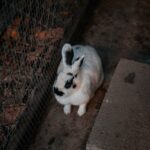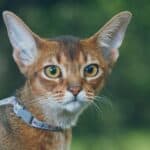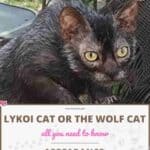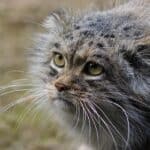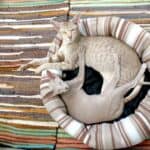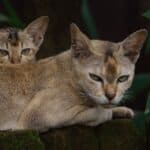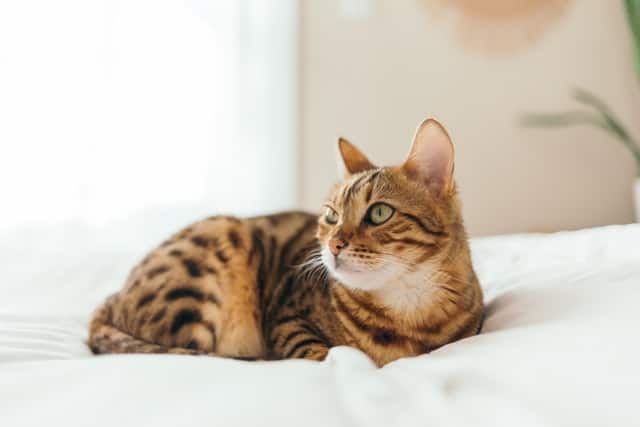
The California Spangled Cat owes its existence to American nature-loving filmmaker Paul Casey, author of blockbuster animal series like Live Free, Lassie, and others. In 1971, he was in Tanzania when he learned that the last male leopard in the area had been killed, causing the breed to become extinct. Driven by the desire to find a domestic equivalent of the wild animal to perpetuate its survival, something that could also manifest his love for animals, he noted the characteristics of what would become the California Spangled.
After fifteen years of crossing cats belonging to different breeds, he got the cat he was looking for; he named it California, to recall the place of its origins, and Spangled, an ornithological term defining spotted plumage, to underline its spotted fur. Instead of showing it at a cat show, he offered it as a novelty in 1986, on the pages of America’s most popular mail-order catalog, the Neiman-Marcus.
The success was immediate and so great that more than two years of delay were necessary to satisfy the requests received in the first month of publication. This success allowed Paul Casey to found the California Spangled Foundation, an association aimed at the protection of animals and nature whose mascot is of course the California Spangled.
This breed of cat is unfortunately endangered.
The origins of the California Spangled cat
The main characteristics desired for the California Spangled cat were the spotted coat, typical of cheetahs, jaguars and leopards, their regal and savage, predatory demeanor, and the docility that characterizes the domestic cat. To achieve all this, we choose Siamese of the old type, British and American Shorthairs, Abyssinians, Egyptian Mau, long-haired tabby cats and, finally, Malay domestic cats for their short hair. and velvety.
We understand by reading this list why it took a long time to cross all these cats among themselves, by gradually selecting the characteristics required to create a breed that unites domestic and wild characters; it was only after fifteen years of trying that the desired objectives were finally achieved.
The ideal cat
Its size is moderately large, with strong bones, while the musculature is downright powerful. The head is broad, with well-defined cheeks, the skull and forehead are slightly rounded; the muzzle is broad with a strong chin; the nose is medium in size and the profile presents a slight recess between the eyes.
The ears are as large as they are broad at the base, set high and slightly back on the head, with rounded tips. The eyes are almond shaped, large, wide open and expressive; colors range from brown, gray-brown and amber. The color not allowed is green, while blue is only accepted when paired with a snow leopard dress.
The body is elongated and tubular; the legs are strong, with well-developed musculature and longer than normal forearms; the feet are medium in size and the toes are well developed. The tail, of medium length, ends in one or more dark rings while the tip is always rounded and dark. The fur is supple and abundant, soft to the touch. On the flanks, head, muzzle and legs, it is short, while it is slightly longer on the belly and tail.
Hair color
Colors should never be associated with white, which is only accepted in the form of speckling. The design should be neat and large; its shape may be square, triangular or round, but there must always be a clear contrast between the spots and the base color. We really appreciate a continuous line that goes down from the shoulders to the back and which shares the delicate spots on the shoulders with those, larger, on the back. The tabs feature darker, well-defined stripes at the top.
The character
A very energetic and extremely lively cat, the California Spangled cat can perform miraculous leaps, but it is also an intelligent and docile house cat. It has a rather accentuated sociability, is really affectionate and able to establish a very intense relationship with it’s master which sometimes allows them to understand their moods and anticipate their wishes, to the point of seeming capable of reading in them. thoughts of their master.
Hug:
This cat is very affectionate and participates readily in the activities of family life by observing all the actions and actions of the occupants of the house.
Player:
This excellent hunter is also a very good player who needs to spend a lot of energy. It particularly likes to share games sessions with their human.
Calm:
Very active and extremely energetic, it can make dizzying jumps and takes great pleasure in them! Quite the opposite of a calm and poised cat!
Intelligent:
It’s liveliness is impressive. It is able to learn several tricks, such as pawing, fetching the toy, etc., if given regular training sessions.
Fearful / suspicious of strangers:
Sociable, it will readily approach humans.
Independent:
Due to their affectionate and playful character, it needs the presence of their human being to feel good: loneliness is not his strong point!
Behaviour
Talkative:
Not very talkative, her meowing is soft and discreet.
Greedy / gluttonous:
It is a cat which is not particularly gluttonous, but its energy needs are consequent to its large size. Their food should not only be of quality but ideally regulated by interactive bowls.
Need for exercise:
Very athletic, it needs to spend their energy daily to feel good on it’s paws.
Runaway:
Even if it is fond of outdoor walks during which they will gladly exercise their hunting skills, its attachment to their home will only move them very little away from it.
Compatibility
The California Spangled and the Dogs:
It’s good character means that it can get along with the canine gente, provided that the contact between the two species is done well and that the environment gives them sufficient heights.
The California Spangled and the Other Cats:
Like all cats, they enjoy being the only feline in the house. However, he can become acclimatized to community life in an environment adapted to the number of cats and after a correctly carried out introduction.
The California Spangled and the Children:
Its taste for play and its energy make this cat an excellent playmate for children, provided that they have learned to respect the cat and its needs.
The California Spangled and the Elderly:
With affection to spare, it can share the life of a rather calm person who will shower him with caresses. However, its liveliness requires a sufficiently stimulating environment and daily play sessions.
Price
On average, the purchase price of a California Spangled kitten in breeding is between 713.01 USD and 2376.70 USD , the price often varying according to the line, the breeding, the age or even the sex. This rather high price is explained by the rarity of the breed. For the monthly budget, it will take an average of 47.53 USD / month to meet its needs, by offering them a quality diet and making sure to keep them in good health.
Maintenance
Grooming:
Its short coat does not require any particular maintenance apart from weekly brushing, so that its coat remains shiny. The cleanliness of the ears and eyes should be checked regularly.
Hair loss:
This cat does not especially lose its hair outside of the moulting periods. Regular brushing will help regulate this seasonal loss and prevent hairballs from forming in the stomach.
Food
The California Spangled Cat’s diet should be adapted to its lifestyle and age. A balanced diet is necessary to cover the energy needs of this dynamic feline.
Health
Life expectancy:
The California Spangled can live beyond 15 years .
Resistant / robust:
This breed is quite resistant, both cold and heat.
Tendency to gain
weight : This tomcat does not tend to gain weight. However, an environment that is not stimulating enough leads to boredom and, consequently, to being overweight. It is therefore necessary to ensure that it can be spent daily.
Frequent diseases:
It does not seem subject to any disease in particular, however this breed being very recent, it is difficult to have the necessary distance to be completely sure.
However, the California Spangled can one day develop the same pathologies as any other cat, such as oral pathologies.
Reproduction:
Only marriages between California Spangled are allowed.
Good to know
Instead of being shown at a cat show, the California Spangled made the front page of an American mail order catalogue, the Neiman-Marcus. It was so successful that it took two years to cover the requests for the first month of publication!

